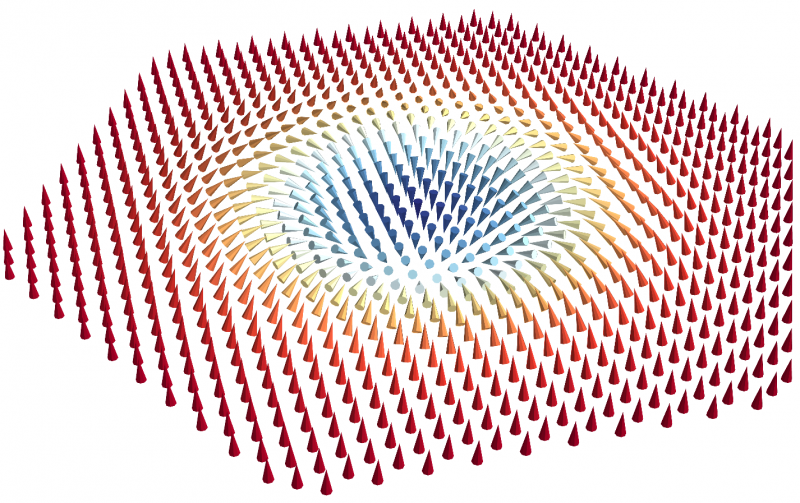Characterization of magnetic nanovortices simplified

Magnetic nanovortices, so-called "skyrmions", count among the most promising candidates for the future of information technology. Processors and storage media making use of these tiny structures could one day lead to the further miniaturization of IT devices and improve their energy efficiency significantly. Materials possessing suitable vortices can be identified in particular by their topological charge, an essential characteristic of skyrmions. To determine this property experimentally has up to now been a very laborious process. Physicists from Jülich have now put forward a simpler method which could speed up the screening of suitable materials, using X-rays.
The magnetic moment of an atom has two contributions, the spin part, which arises from the alignment of the intrinsic spin angular momentum of the electrons, and the orbital part,related to the coordinated orbital motion of the electrons. The former is the dominant source of the magnetic moment of the atoms in a solid, while the latter is usually found when spin-orbit coupling is active. However, a few years ago it was found that – even without spin-orbit coupling – an orbital moment can be finite. To make that happen, at least three magnetic atoms have to be combined, forming a trimer with a non-collinear and non-planar magnetic structure.
A team of theoretical physicists from the Jülich Institute "Quantum Theory of Materials" (PGI-1/IAS-1) has now analysed the effect in detail for such magnetic trimers, and examined the consequences for skyrmions. The scientists propose a protocol on how to probe this contribution to the orbital magnetism, and furthermore, how to employ it to detect and distinguish different types of skyrmions. "One of the most important quantities characterizing the skyrmion is the topological charge, also known as the 'skyrmion number'", explains Dr. Manuel dos Santos Dias, Postdoc in institute's Young Investigators Group "Functional Nanoscale Structure Probe and Simulation Laboratory"(Funsilab). "A direct measurement of the topological charge has been difficult, as it requires a detailed map of the three-dimensional magnetic structure or finding certain signatures in transport experiments. Therefore, only very few experiments have been undertaken. Skyrmions with a richer internal structure have also attracted attention recently, and our proposed protocol naturally enables its experimental determination."
Jun.-Prof. Samir Lounis, head of Funsilab, adds: "We propose a spectroscopic approach using X-ray magnetic circular dichroism to measure this quantity fast and efficiently. The technique could be implemented at any synchrotron covering the soft X-ray regime."
More information: Manuel dos Santos Dias et al. Chirality-driven orbital magnetic moments as a new probe for topological magnetic structures, Nature Communications (2016). DOI: 10.1038/ncomms13613
Journal information: Nature Communications
Provided by Forschungszentrum Juelich



















